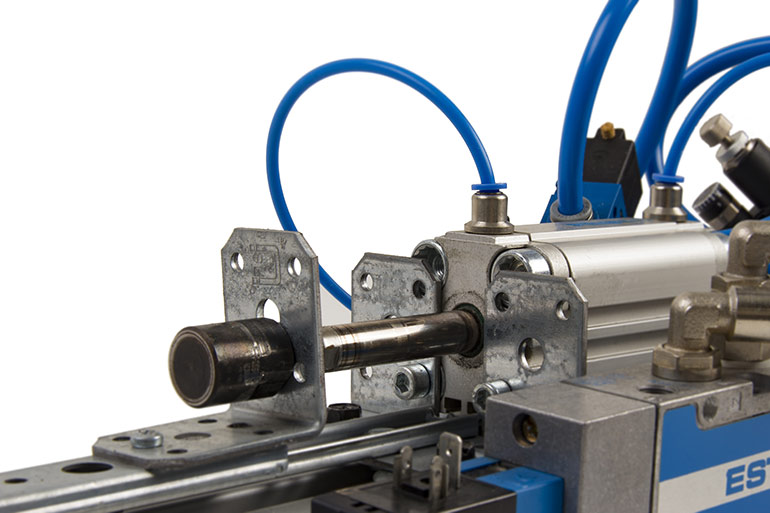By Josh Cosford, Contributing Editor
Pneumatic cylinders are essential in various industrial applications, providing the mechanical force needed to move loads, automate equipment, and perform countless other tasks. However, pneumatic cylinders encounter issues that impede their performance like other machine components. When your pneumatic cylinder isn’t working as expected, it can lead to downtime, reduced efficiency, and increased maintenance costs. What’s worse than your malfunctioning cylinder is not knowing why it won’t function. I’ve got five common possible reasons your pneumatic cylinder isn’t working.

- Air leakage: If you can hear hissing from one or more places on your cylinder, or if it moves sluggishly or not at all, your air cylinder may be leaking. For example, if you find your cylinder isn’t holding its position, it’s likely because air is leaking past the piston seals. But also, these leaks can occur at various points, including the cylinder end seals, cushion seals or at its ports. To remedy this problem, you’ll need to identify and fix the source of the leakage, which often involves replacing worn seals or tightening connections.
- Lack of lubrication: Many pneumatic cylinders require proper lubrication to function smoothly. Without adequate lubrication, the internal components can experience increased friction, reducing efficiency, static friction and potential damage. Regularly check and maintain the lubricator (the L in FRL) to ensure your cylinder operates smoothly. Additionally, use the recommended lubricants or oils to prevent seal compatibility issues.
- Cylinder misalignment: Pneumatic cylinders must be properly aligned with their load in an axial plane. Misalignment can cause uneven wear, increased friction, or even all-out breakage, so make sure your cylinder is correctly positioned along its force vector and that it operates within its specified load and speed limits. If necessary, realign the cylinder or install spherical bearings or alignment couplers.
- Contaminants and impurities: Dust, dirt, and other contaminants in the air supply can wreak havoc on pneumatic cylinders. These particles can enter the cylinder and damage seals, pistons, and other internal components. Regularly inspect and service the air supply system (including the compressor) and maintain filters to prevent contaminants from entering the cylinder. As with hydraulics, cleanliness is one of the best practices to improve reliability.
- Inadequate pressure or flow: If your pneumatic cylinder seems sluggish or fails to provide the necessary force, it may be due to insufficient pressure or airflow. Check that the air compressor and regulator settings match the cylinder’s requirements and aren’t below specification. Adjust the pressure as needed to ensure the cylinder operates within its specified parameters or replace malfunctioning regulators. Additionally, inspect the air supply lines for obstructions that may limit airflow.
Like many fluid power components, pneumatic cylinders have finite lifespans, and understanding when to replace them is crucial. Here’s a bonus tip:
- Age and usage history: Consider your pneumatic cylinder’s age and usage history, as older cylinders or those subjected to heavy and continuous use are more prone to wear and failure. Keeping records of installation dates, service, and usage can help you anticipate when a replacement or preventive maintenance is necessary.
Maintaining the reliability and performance of your pneumatic cylinder is vital for the efficiency of your industrial operations. By addressing issues promptly, conducting regular inspections, and following proper maintenance practices, you can avoid costly breakdowns and expensive downtime. If you’re uncertain about the condition of your pneumatic cylinder, it’s advisable to consult with a qualified pneumatic technician or engineer who can conduct a thorough inspection and provide guidance on whether it’s time for a replacement. Staying proactive is critical to keeping your pneumatic cylinders in optimal working condition, ensuring smooth and efficient industrial processes.
Filed Under: Components Oil Coolers, Cylinders & Actuators, Engineering Basics, Pneumatic Tips